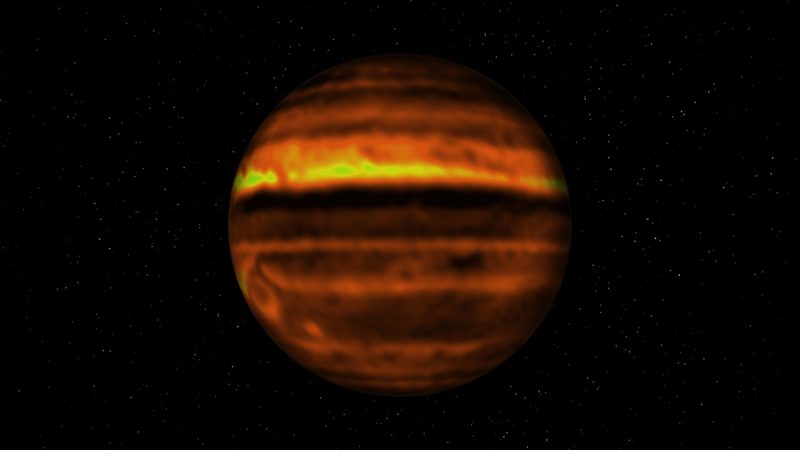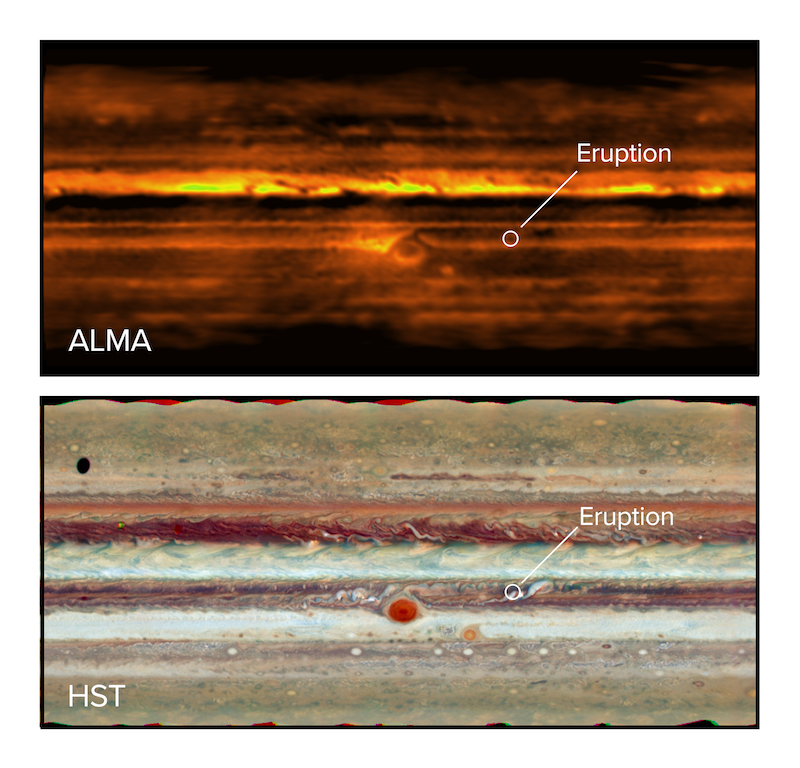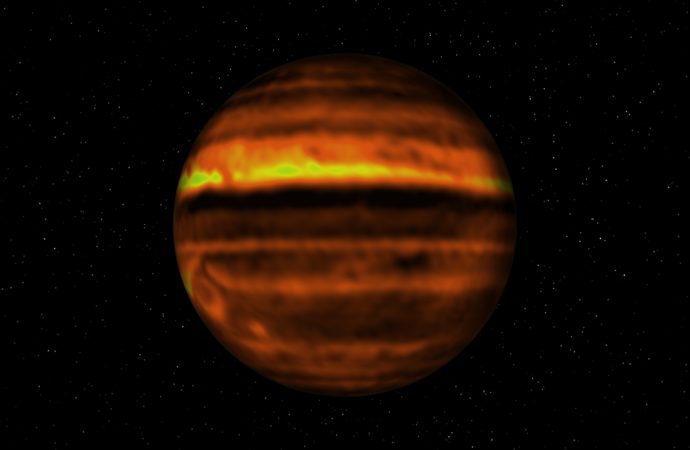New radio images made with the ALMA telescope provide a look at what’s going on beneath Jupiter’s colorful storms and swirling clouds.
Source: EarthSky.org
The National Radio Astronomy Observatory published these new radio images of Jupiter on August 20, 2019. They’re made with the Atacama Large Millimeter/submillimeter Array (ALMA) in northern Chile. They show Jupiter’s atmosphere down to 30 miles (50 km) below the planet’s topmost, visible cloud deck, which is made up of ammonia ice. NRAO wrote:
Swirling clouds, big colorful belts, giant storms – the beautiful and turbulent atmosphere of Jupiter has been showcased many times. But what is going on below the clouds? What is causing the many storms and eruptions that we see on the ‘surface’ of the planet? To see this, visible light is not enough. We need to study Jupiter using radio waves.
Imke de Pater of the University of California, Berkeley is lead author of the new radio study of Jupiter’s storms. Her team acquired the images with the ALMA telescope a few days after amateur astronomers spotted an eruption in Jupiter’s South Equatorial Belt in January 2017. According to NRAO:
A small bright white plume was visible first and then a large-scale disruption in the belt was observed that lasted for weeks after the eruption.
Such eruptions on Jupiter can be compared to thunderstorms on Earth and are often associated with lightning events, NRAO said.
Imke de Pater explained:
ALMA enabled us to make a three-dimensional map of the distribution of ammonia gas below the clouds. And for the first time, we were able to study the atmosphere below the ammonia cloud layers after an energetic eruption on Jupiter.

De Pater and her colleagues used ALMA to study the atmosphere below the plume and the disrupted belt at radio wavelengths and compared these to UV-visible light and infrared images made with other telescopes at approximately the same time. She said:
Our ALMA observations are the first to show that high concentrations of ammonia gas are brought up during an energetic eruption. The combination of observations simultaneously at many different wavelengths enabled us to examine the eruption in detail. This led us to confirm the current theory that energetic plumes are triggered by moist convection at the base of water clouds, which are located deep in the atmosphere.
The plumes bring up ammonia gas from deep in the atmosphere to high altitudes, well above the main ammonia cloud deck.

Bottom line: After amateur astronomers spotted an eruption in Jupiter’s South Equatorial Belt in January 2017, astronomers used the ALMA telescope to acquire radio images of the planet, showing high concentrations of ammonia gas brought up during the eruption.

































Leave a Comment
You must be logged in to post a comment.